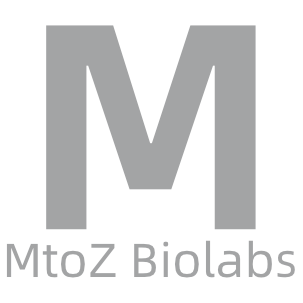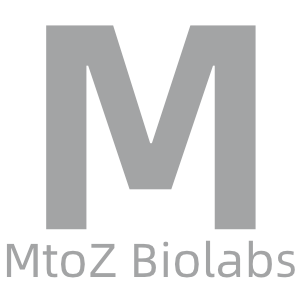Metabolomics Analysis
-
Ononin is an isoflavone glycoside compound belonging to the flavonoid class of plant secondary metabolites. Ononin is widely found in various leguminous plants, such as red clover (Trifolium pratense) and soybean (Glycine max). Additionally, it is also present in some traditional medicinal plants, such as licorice (Glycyrrhiza) used in traditional Chinese medicine. The chemical structure of ononin consists of an isoflavone core formed by a 4-oxo-benzopyranone ring and a benzene ring, to which a glycoside ch
-
• Irisflorentin Analysis Service
Irisflorentin is a natural flavonoid compound primarily found in the rhizomes of Iris species, particularly Iris florentina. Irisflorentin consists of a flavonoid backbone characterized by a three-ring structure composed of 15 carbon atoms (C6-C3-C6). Its chemical structure includes hydroxyl and methoxy groups, which are crucial for its biological functions. Research has shown that irisflorentin exhibits strong anti-inflammatory effects. It demonstrates potential in treating inflammatory diseases by inhibit
-
Deguelin is a natural flavonoid compound, belonging to the rotenoid derivatives, primarily found in leguminous plants such as Lonchocarpus, Derris, or Tephrosia species. Deguelin has the chemical formula C23H22O6, with a molecular structure that includes multiple phenolic hydroxyl groups. Its structural features, such as polycyclic aromatic structures and an oxidized pyran ring, endow it with various biological activities. Deguelin exhibits significant effects in anticancer, anti-inflammatory, and antioxida
-
• Formononetin Analysis Service
Formononetin is a natural isoflavone widely found in leguminous plants, particularly in red clover (Trifolium pratense) and soybeans (Glycine max). Structurally, Formononetin has a similar action to estrogen and is therefore classified as a phytoestrogen. Its chemical structure is composed of 4'-hydroxy-7-methoxyisoflavone. Formononetin has garnered significant attention due to its multiple biological activities, especially in the prevention and treatment of various diseases. Its main pharmacological effect
-
Epimedin A is a bioactive flavonoid glycoside primarily found in the plant *Epimedium*. This compound belongs to a group of related flavonoid derivatives known as icariin, which are renowned for their medicinal properties, particularly in traditional Chinese medicine. Epimedin A is a glycoside, meaning it consists of a flavonoid part linked to one or more sugar units. Its molecular formula is C33H40O15. The core structure of Epimedin A is similar to that of icariin, featuring a flavonol backbone with hydrox
-
• 7-Hydroxy-4H-Chromen-4-One Analysis Service
7-Hydroxy-4H-chromen-4-one, also known as 7-hydroxycoumarin or umbelliferone, is a naturally occurring organic compound belonging to the coumarin family. This compound is widely found in various plants, particularly in species from the Apiaceae (such as carrots) and Rutaceae (such as citrus) families. The molecular formula of 7-hydroxy-4H-chromen-4-one is C₉H₆O₃. The hydroxyl group at the 7th position makes this molecule more reactive than other coumarins and enhances its solubility in water. The presence o
-
• (E)-Flavokawain A Analysis Service
(E)-Flavokawain A is a natural chalcone predominantly found in the kava plant (Piper methysticum), which is traditionally used in the Pacific Islands for its sedative and anxiolytic properties. Structurally, (E)-Flavokawain A belongs to the chalcone family and is characterized by its open-chain flavonoid structure, specifically identified as 2′,4′,6′-trihydroxy-4-methoxychalcone. (E)-Flavokawain A has gained considerable interest due to its diverse biological activities, particularly in the context of disea
-
Calycosin is a natural isoflavone compound, primarily found in medicinal plants such as Astragalus membranaceus. Its chemical structure consists of an isoflavone backbone and multiple functional groups, which endow it with a variety of biological activities. Research has shown that calycosin possesses significant pharmacological effects, including anti-inflammatory, antioxidant, antitumor, and antibacterial activities. Its anti-inflammatory effect is mainly achieved through the regulation of inflammatory me
-
• Corylifol A Analysis Service
Corylifol A is a natural coumarin compound primarily found in plants such as Psoralea corylifolia. Its chemical structure consists of a coumarin backbone and other functional groups, which contribute to its diverse biological activities. Research has shown that Corylifol A possesses significant pharmacological effects, including anti-inflammatory, anti-tumor, antioxidant, and antimicrobial activities. Its anti-inflammatory effect is achieved by inhibiting the release of inflammatory mediators and suppressin
-
Daidzin is a bioactive isoflavone glycoside primarily found in plants such as soybean (Glycine max) and kudzu (Pueraria lobata). This compound belongs to a group of related isoflavone derivatives known as daidzein, which are widely recognized for their various medicinal properties. Daidzin is a glycoside, meaning it consists of an isoflavone moiety linked to one or more sugar units. Its molecular formula is C21H20O9. The core structure of daidzin is similar to that of daidzein, featuring an isoflavone backb
How to order?







